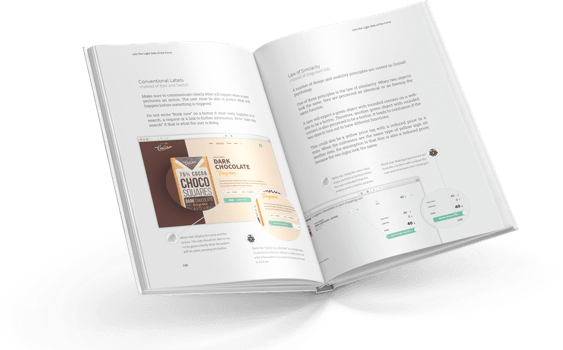Joel Marsh - aka HipperElement. Author of UX for beginners
In UX there are a lot of opportunities to abuse the user, and that’s bad. Unfortunately, abusing the user is often a way of increasing short term profit, even if you end up destroying your long term potential in the process.
White Hat UX takes you through the good, the bad and the ugly of deceptive UX design. The interesting thing about deceptive (or “black hat”) UX design, is that you need to know how to recognize it — and maybe even how to do it — before you can avoid it. So the authors gives lots of examples and patterns that you should not do too.
The more “white hat” we can be in our industry, the better it is for everyone. But aside from the moral implications, white hat UX also makes more money, ironically, over time. So if you want your work to be loved and to be successful, this book is for you.
Magga Dora - Experience Design Director at MadPow
In an age of fake news and internet scams there are few things as important as calling people out on their bad behavior. Strike that. There are few things as important as showing people how to do things right. That's what this book does. It is a must read for anyone who is interested in expanding their brand to the digital realm. It is an important read for anyone who is designing a digital experience for a client. We designers have to be serious about ethics and about serving the user first and foremost, even if our client thinks it's OK to bend the rules and swindle their customers. This book is about taking the high road. See you there! :)
Chris Atherton - Usability advisor
White Hat UX wears its heart on its sleeve, opening with an introduction from Aral Balkan, one of our most vocal advocates for user privacy and ethical design. This book is timely: now that the concept of good user experience has become well-entrenched, we as specialists need to focus not just on doing the thing, but doing the right thing. White Hat UX looks at the ethical issues associated with lack of transparency (and sometimes downright malicious intent) in user interface and digital service design. The book offers many helpful, concrete illustrations of less-than-ethical practices in e-commerce and digital user experience, as well as useful insights from the industry. In addition, the tone of voice is engaging and sometimes marvellously dry.
Emma Johansson - Digital designer at Gnist
This book gives a valuable overview of the ethics in crafting optimal user experiences and how to spot and avoid bad patterns. In a time when data is freely available and the user is becoming the product, we desperately need some guidelines to clear out some of the pollution of the Internet.
It’s a quick, fun and easy read with many practical examples and ideas on how, through small changes in your workflow, you can positively impact post-launch problems. Deliberately creating bad user experiences, will come back and bite you in the ass, either through declining sales or blacklisting in search engines.
I would get this book to all the HIPPOs in your company, to keep them from making uninformed decisions based on sneaky strategies or irrelevant opinions. It should also be mandatory reading for anybody starting out in UX, be it students or graphic designers venturing into the realm of digital interfaces. If you already are a senior designer or developer creating user experiences, whether it’s software, websites or applications, this would also serve as a good reminder and keep you focused. After all, with great power comes great responsibility, and it is our responsibility as professionals to not succumb to the dark side.
Inayaili de León - Senior Digital Product Designer at @makeusproud
White Hat UX is a great reminder for experienced designers of the kind of work we should be striving to do, and an excellent introduction to the topic for UX novices, as it dedicates some time to explain some of the basic concepts.
Trine’s book, co-authored with Kim Andersen and Martin Michael Frederiksen, focuses on doing things right. It goes into detail about how we can improve our users’ experience of our sites and products, and our bottom line, without resorting to dubious design practices.
“Day-to-day business is about traffic measurements, conversion rates, cost per click, page views, uptime, media convergence and all the three-letter acronyms of IT business.
“What has become of style, tone, good language, identity, branding and positioning? They are still there, but are struggling to keep afloat among the flurry of new technologies all driven by metrics.”
—White Hat UX, page 53
My favourite aspect of the book is that it holds design professionals to the high standards that we should all want our work to meet, without excuses. Our work can influence the lives of people in ways that we can’t even image, and as professionals with this kind of influence it’s important for us to revisit our practices and consider what we do regularly throughout our careers.
Polina Stoyanova - UX developer, teacher, design thinker
White Hat UX is an insightful honest read. It uncovers the hidden practices of black and grey hat strategies, whilst informing how to design delightful, usable and purposeful experiences with moral and empathy. Written with passion, this book makes the reader think, discover and even laugh.




